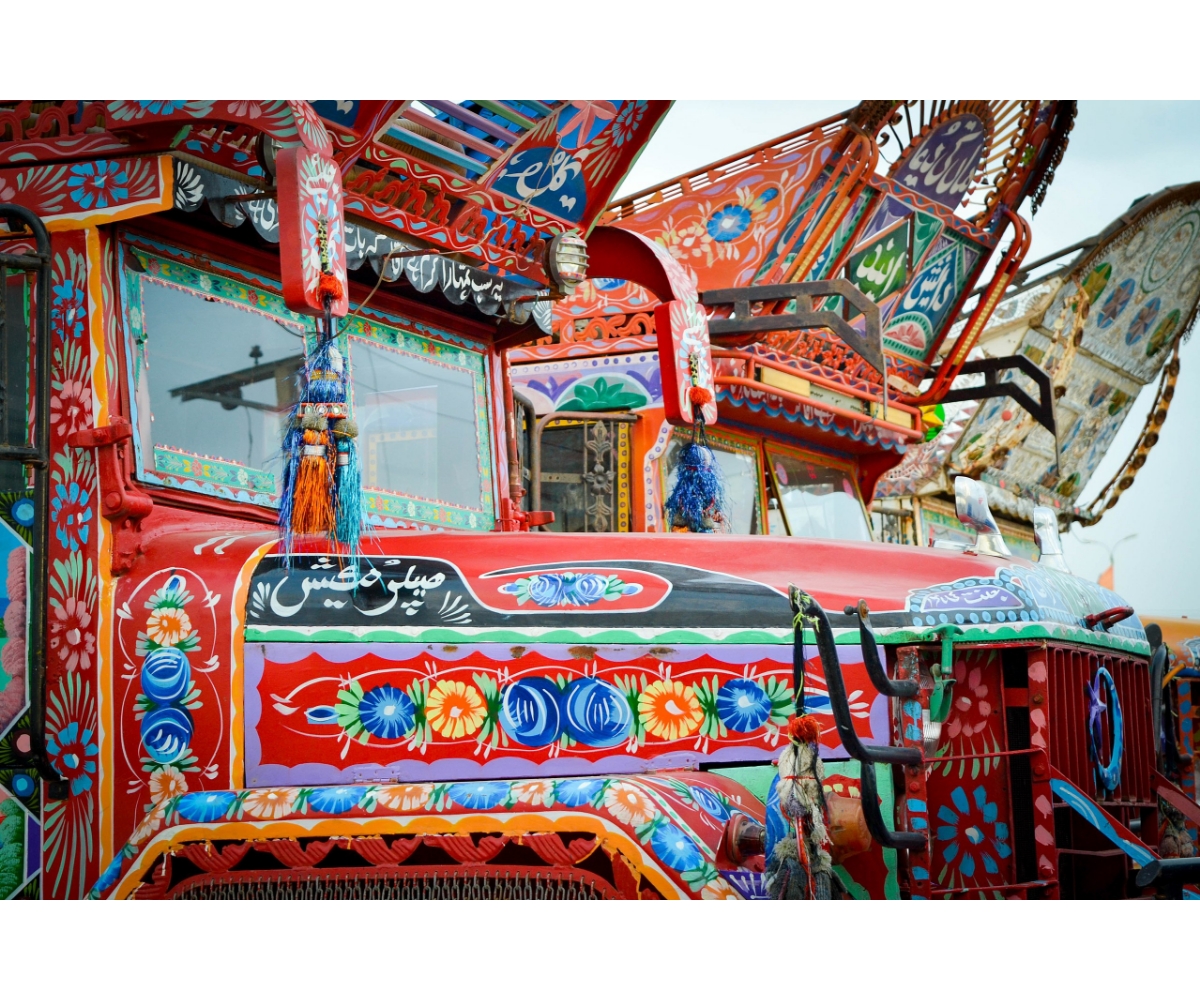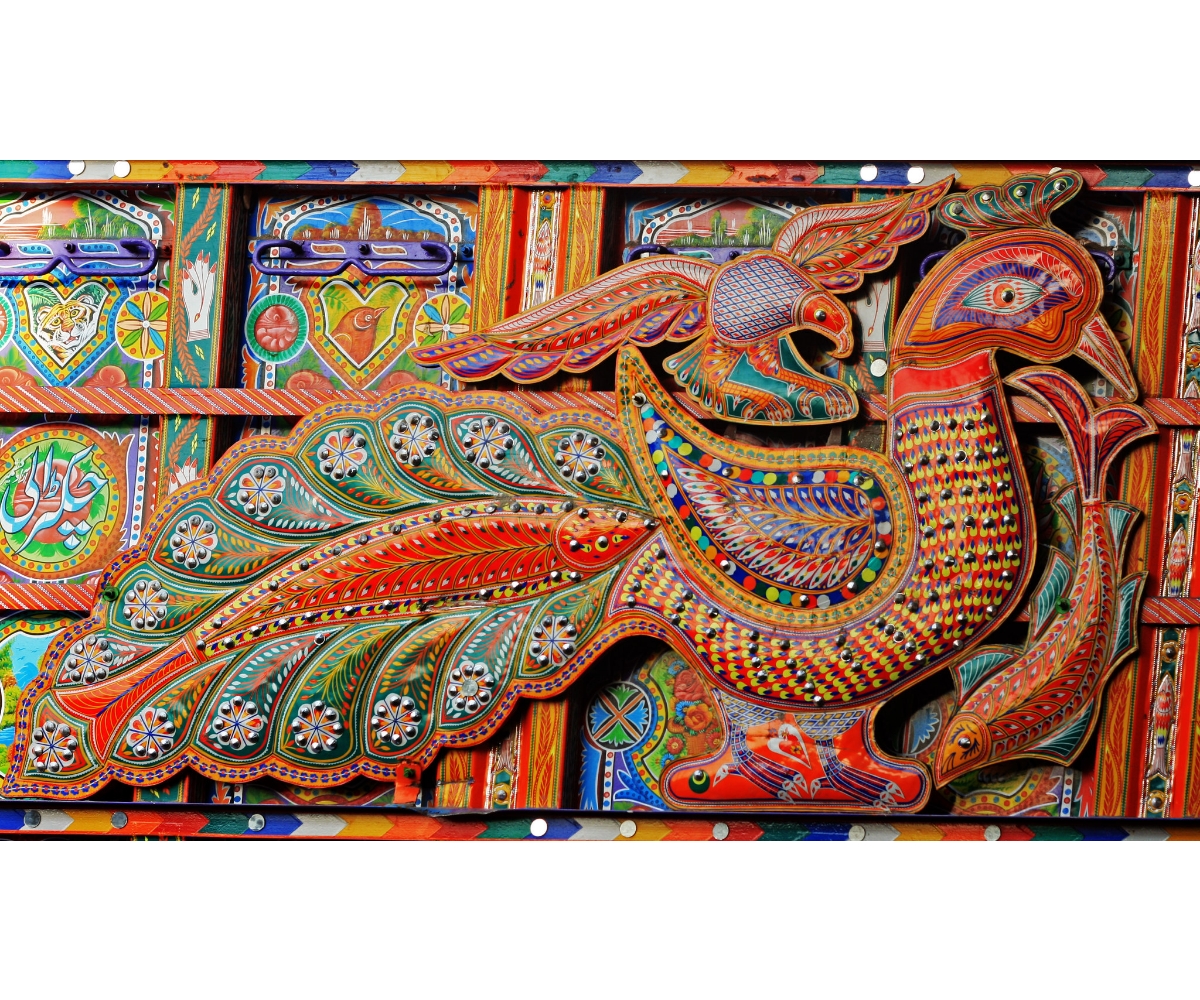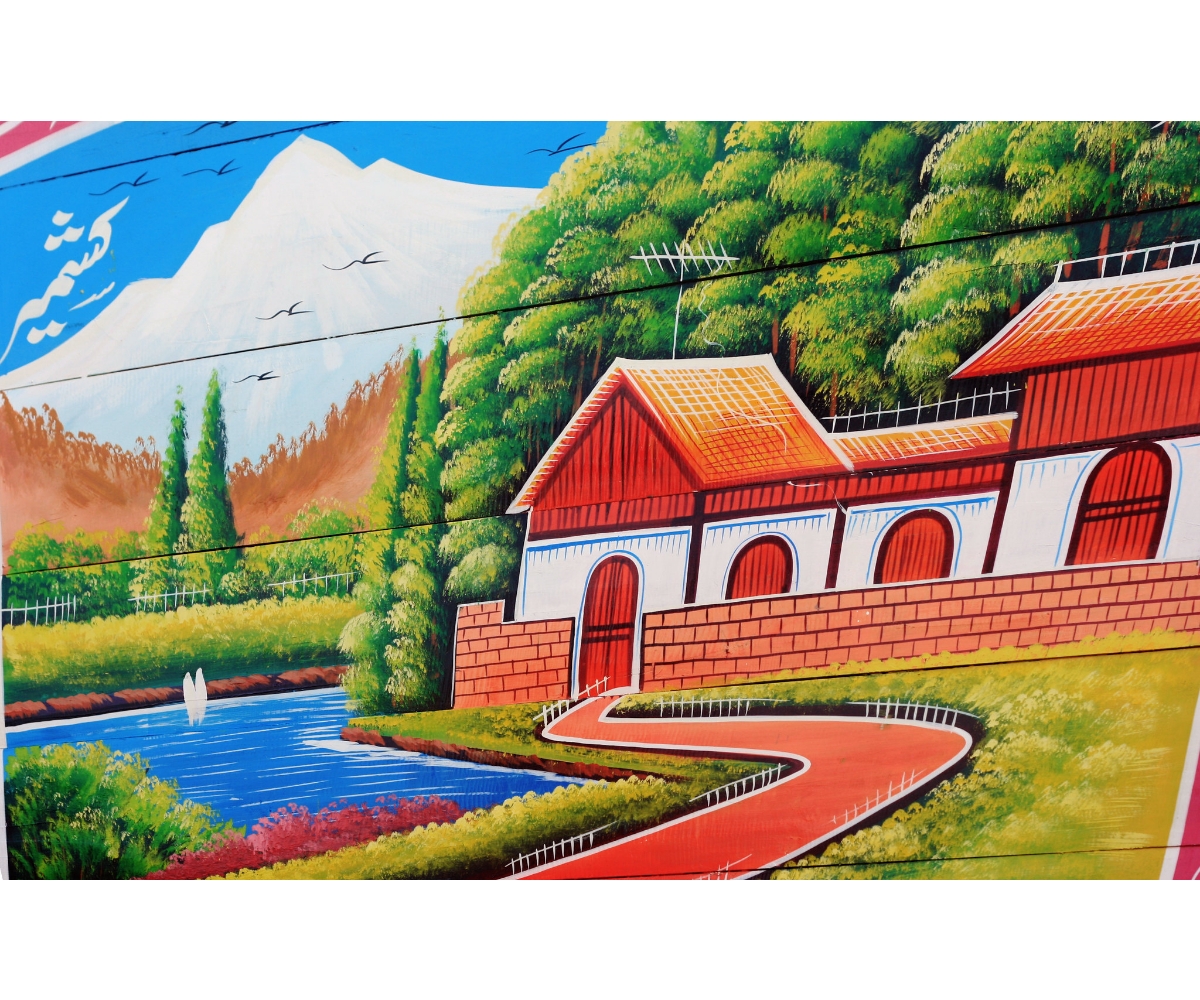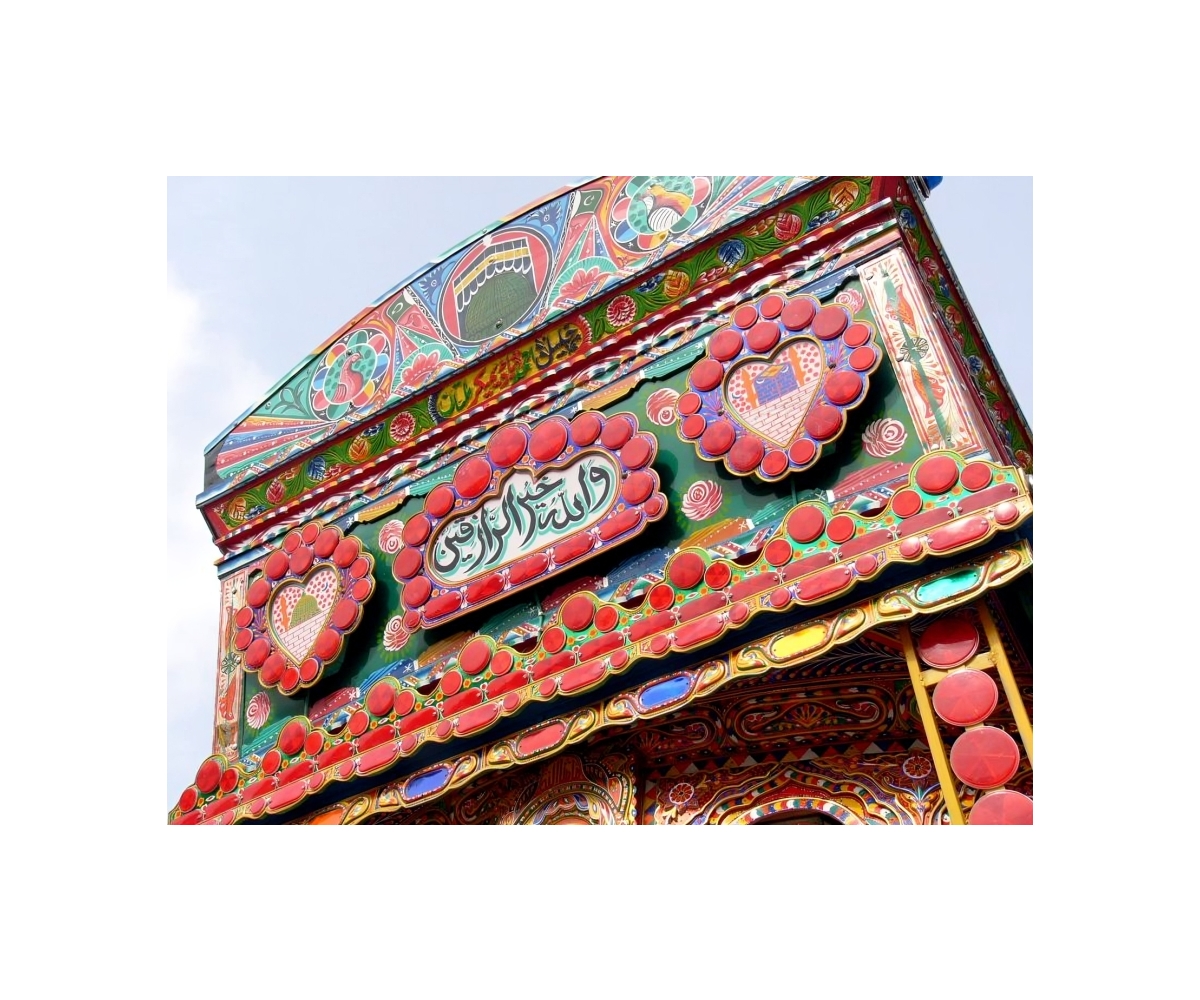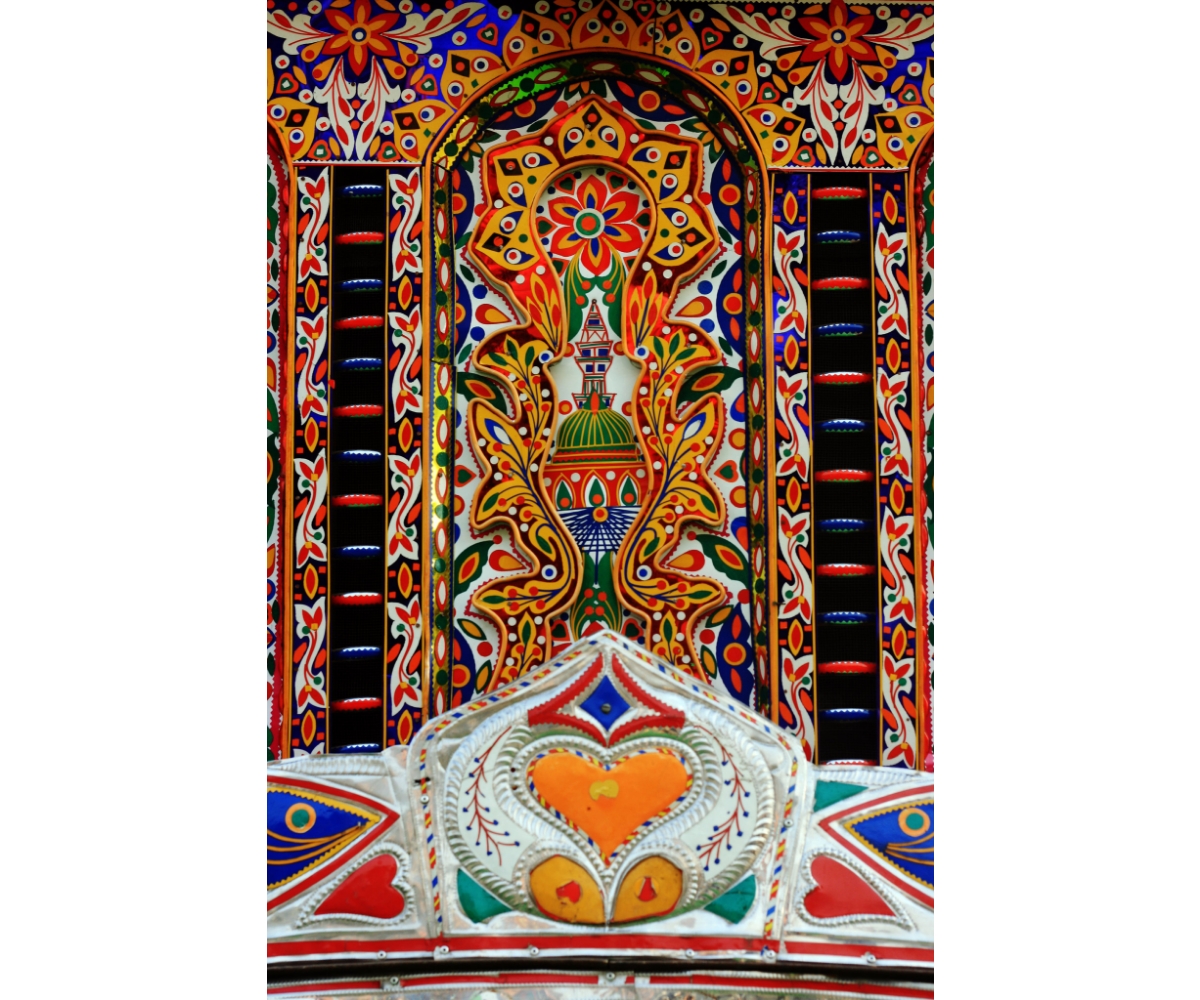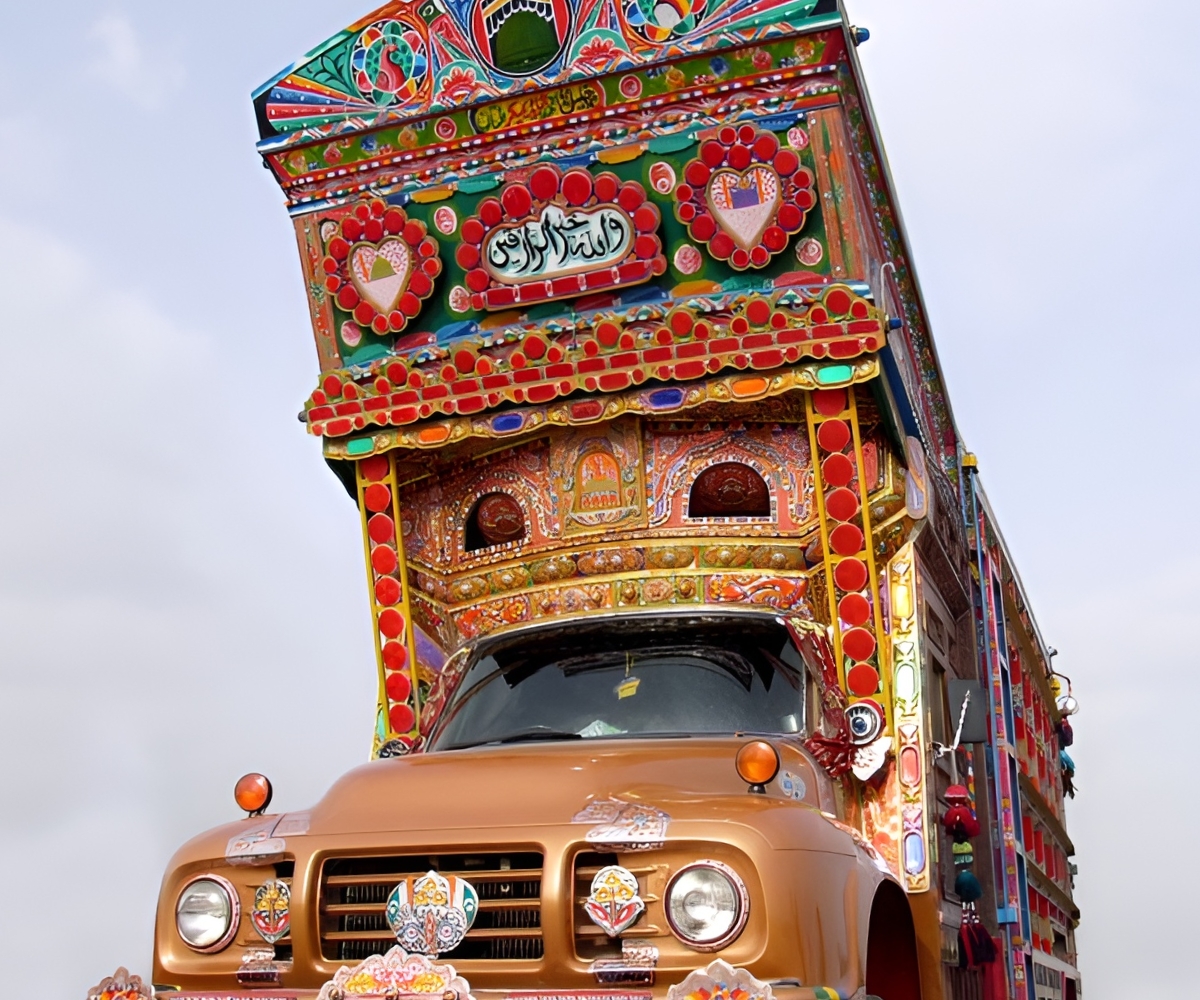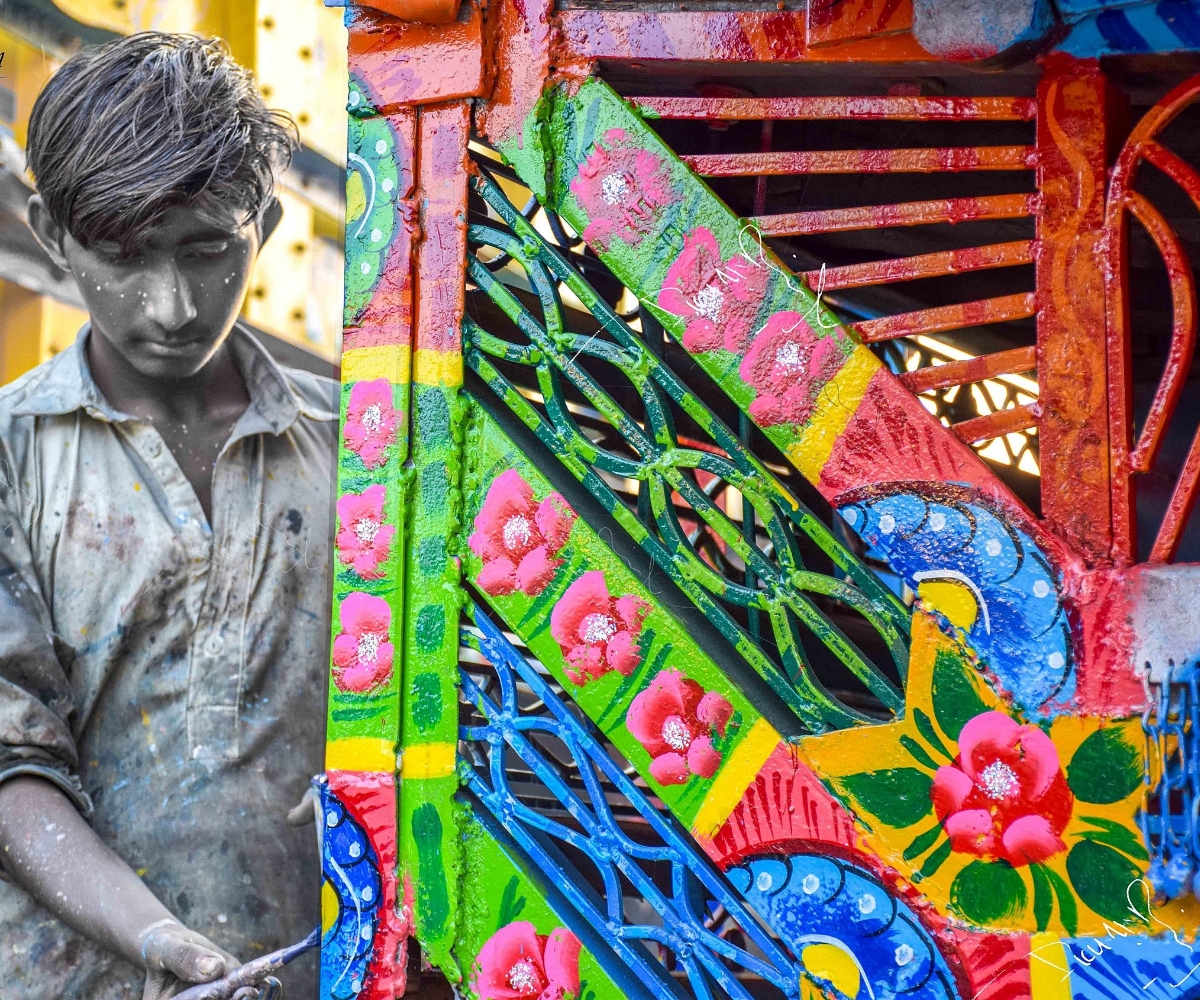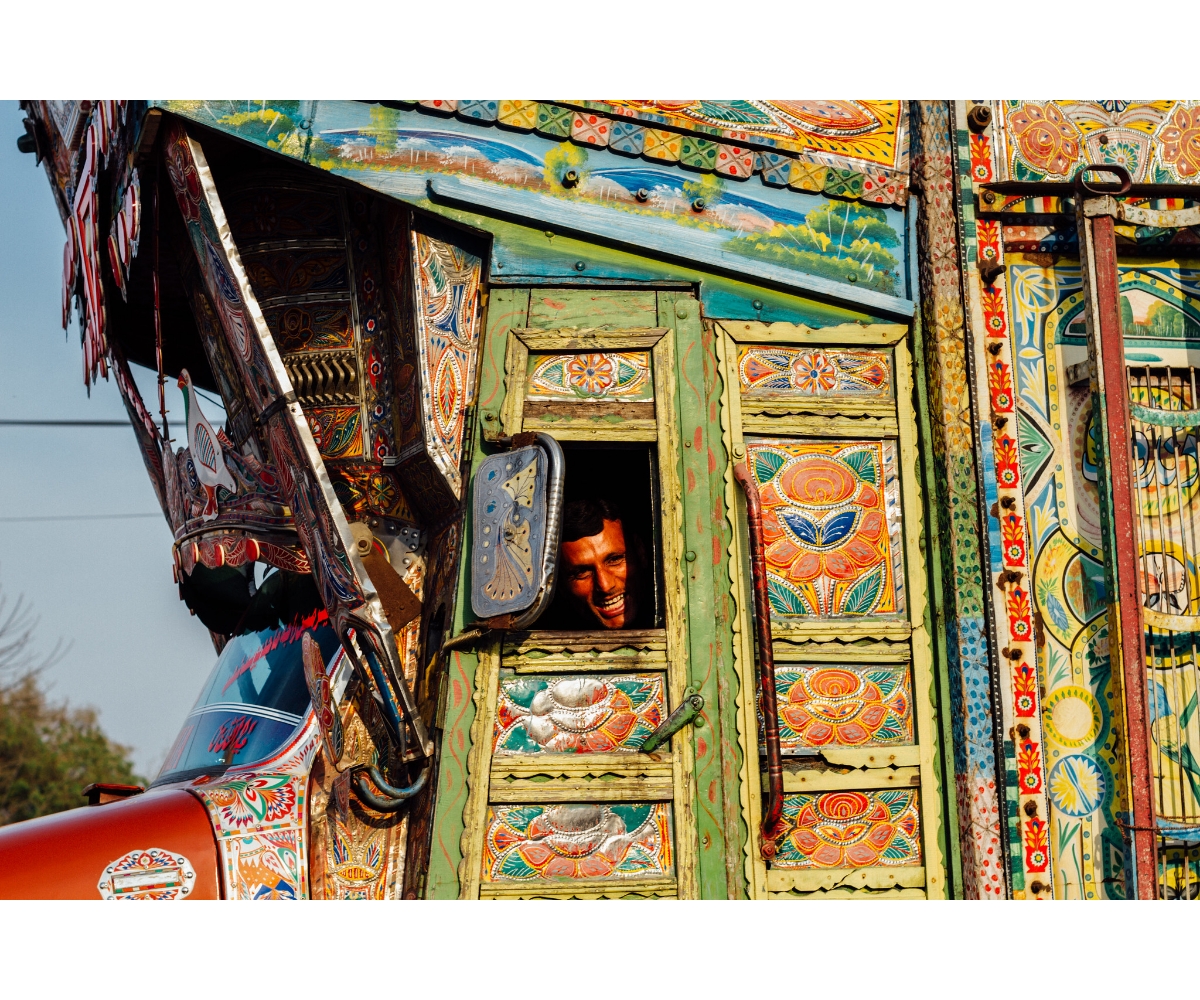PERSPECTIVES
Adorned in Dreams: Art and Poetry on Pakistan’s Highways
‘Pass kar, ya bardasht kar’ — Go past me, or suffer patiently behind me, says the rear of a water-tanker in Karachi, Pakistan. The tanker is painted azure blue and covered in images of colourful birds, bright floral patterns and a desert palm placed behind two crossed swords, enclosed by an ornate red border. A talismanic pair of eyes — believed to deflect misfortune, or nazar — is often painted on these vehicles, and seem to be an invitation to observers to look closely at the stories they have to tell.
The trucks of Pakistan belong to a long tradition of South Asian trucks that are adorned with poetic expressions, hand-painted art, vinyl stickers, good luck charms, and are representative of a trucker’s political and cultural identity as well as aspirations. So mesmerising is the psychedelic art form on Pakistan’s trucks — be it paintings, poetry, typography and calligraphy — that these are now widely exhibited, researched and catalogued. Much like their Indian counterparts, truck art in Pakistan is a historical artefact recording and responding to changing political and social climates. It is difficult to ascertain the original artist behind these paintings: it could be the truck driver himself, or the owner of the truck, or an independent painter. Thus the portraits of filmstars and political leaders, the catchy slogans with social or religious connotation, or the expressive romantic poetry splashed across the entire expanse of the truck is a combined statement by various stakeholders. It is in the context of this rich appreciation and adulation that one wonders how one of the most independent and flamboyant idioms of public art in South Asia came to be.
In 1920, Bedford trucks, made by a subsidiary of the British company General Motors, began selling in Pakistan (then part of undivided India). Soon after, these Bedford trucks were attached with the large wooden prows and metal bumpers that gave them their imposing and distinctive appearance. Gifted with extra space, Hindu, Sikh and Muslim truck drivers and owners in the region got to work and painted every inch of the truck with intricate designs, and religious iconography of gurus, saints, and gods. After Independence, with the formation of a new nation-state, truck art in Pakistan turned more patriotic, often acting as a device for the drivers and owners to pledge allegiance to their country and its political leaders.
In the 1960s, the then-president and military dictator, General Ayub Khan developed a fan-following among the truckers from the North-West Frontier Province (NWFP, in present-day Khyber Pakhtunkhwa) since he was from NWFP himself and had supported a range of policies that benefited locals belonging to that region. Perhaps in gratitude or perhaps as political propaganda, the truckers of NWFP painted his likeness across almost all their trucks creating an indelible memory for unsuspecting passersby. The dictatorial ‘60s were followed by the liberal ‘70s, making way for the socialist president, Zulfikar Ali Bhutto. In this period, the combined influences of pop art from the West, the socially liberal politics of the Bhutto-led government and the rise of psychedelic Pakistani film posters led to more exuberant designs with floral motifs and bright colours, experimental and creative calligraphy and romantic poetry, on trucks plying roads connecting the provinces of Punjab and Sindh — Bruce Lee too, made an appearance at this time.
Against this rapidly transforming artistic landscape, a peculiar phenomenon in the 1980s took the truck art scene by storm: the rise of the first superstar truck artist, Kafeel. Paintings on a large number of trucks and lorries in Sindh were signed, ‘Kafeel Bhai Ghotki Wally (Kafeel from Ghotki, Sindh); Right Arm Left Arm Spin Bowler.’ Initially, this distinct signature skipped past the notice of everyone; but it soon came under the observation of curious locals and Karachi journalists. After a thorough investigation, by nosy onlookers and determined reporters alike, it was discovered that the artist Kafeel was a heartbroken failed-cricketer, who had become a truck painter. He painted a range of images from British aristocrat Lady Diana to Pakistan’s beloved singer Noor Jehan, on trucks in Ghotki in exchange for a nominal fee and signed them all with the statement alluding to his cricket bowling skills. In the following years, Kafeel’s popularity in the world of truck art grew as a result of his skill and artistry, and word-of-mouth recommendations. Truck drivers clamoured to get their trucks painted by him, while an entire generation of truck artists drew inspiration from his art. During his era of popularity, Kafeel’s priorities remained clear. He did not care much for financial prosperity, refusing to increase his fee; but refused to compromise with his characteristic signature. Invited to France in 1992, Kafeel declined the invitation since there was some apprehension regarding the signature on his artworks. Significantly, his sign now read, ‘Mashoor-e-zamana spin bowler, Kafeel Bhai ko salam (Greetings to the world-famous spin bowler, Kafeel Bhai).’
Imbued with the aspirations and anxieties of various Pakistani drivers over decades, truck art has turned into a colourful repository of history. Today, there is a certain self-consciousness with which truck drivers and owners in Pakistan and other parts of South Asia approach the paintings on their trucks, treating it as an extension of their identity and as a visually loud claim on their rightful place in society. The artistic expressions and poetic expositions on the trucks are amusing and entertaining, but they also reveal philosophical uncertainties about loneliness, love, family life and personal ambitions. According to graphic designer and researcher Abeera Kamran, Pakistani truck art showcases both the “tender desires and public opinion” of the artists and drivers. These public opinions were also often political: In 2020, Haider Ali, a truck artist from Karachi, painted a mural of George Floyd, an African-American man who was murdered by a police officer in Minnesota, USA the same year.
The art and literature on the trucks in Pakistan is sometimes exceedingly symmetrical, sometimes multilingual or multi-scriptural and sometimes, recklessly extravagant — there are no rules, no template, only expression. Although ‘truck literature’ is not always an expression of the working classes, it is often an example of how anyone can enjoy a little wordplay or a lovesick lament. Truck drivers find solace in couplets and poems of their favourite artists and therefore adorn their trucks with sentimentality. The growing interest in ‘truck literature’, Bangladesh’s ‘rickshaw painting’ and ‘auto poetry’ — romantic and cheeky poems found on autos in India and Pakistan — is a testament to how public art and literature can recentre the margins.
Bibliography
Ali, Salwat. “Desi by Design.” Dawn. June 14, 2015.
APP. “Moving Billboards — Advocating for Girls’ Education through Truck Art.” Dawn. December 02, 2018.
Kafle, Danish. “What Does the Truck Say?: Decoding South Asian Truck Literature.” Sahapedia. March 22, 2021.
Images Staff. “A Pakistani Truck Artist Painted a Mural in His Home in Memory of George Floyd.” Images/Dawn. June 13, 2020.
Paracha, Nadeem F. “The Elusive History and Politics of Pakistan’s Truck Art.” Dawn. August 19, 2016.
Rashid, Salman. “Kafeel Bhai.” Odysseus Lahori, January 06, 2013. https://odysseuslahori.blogspot.com/2013/01/kafeel-bhai.html




